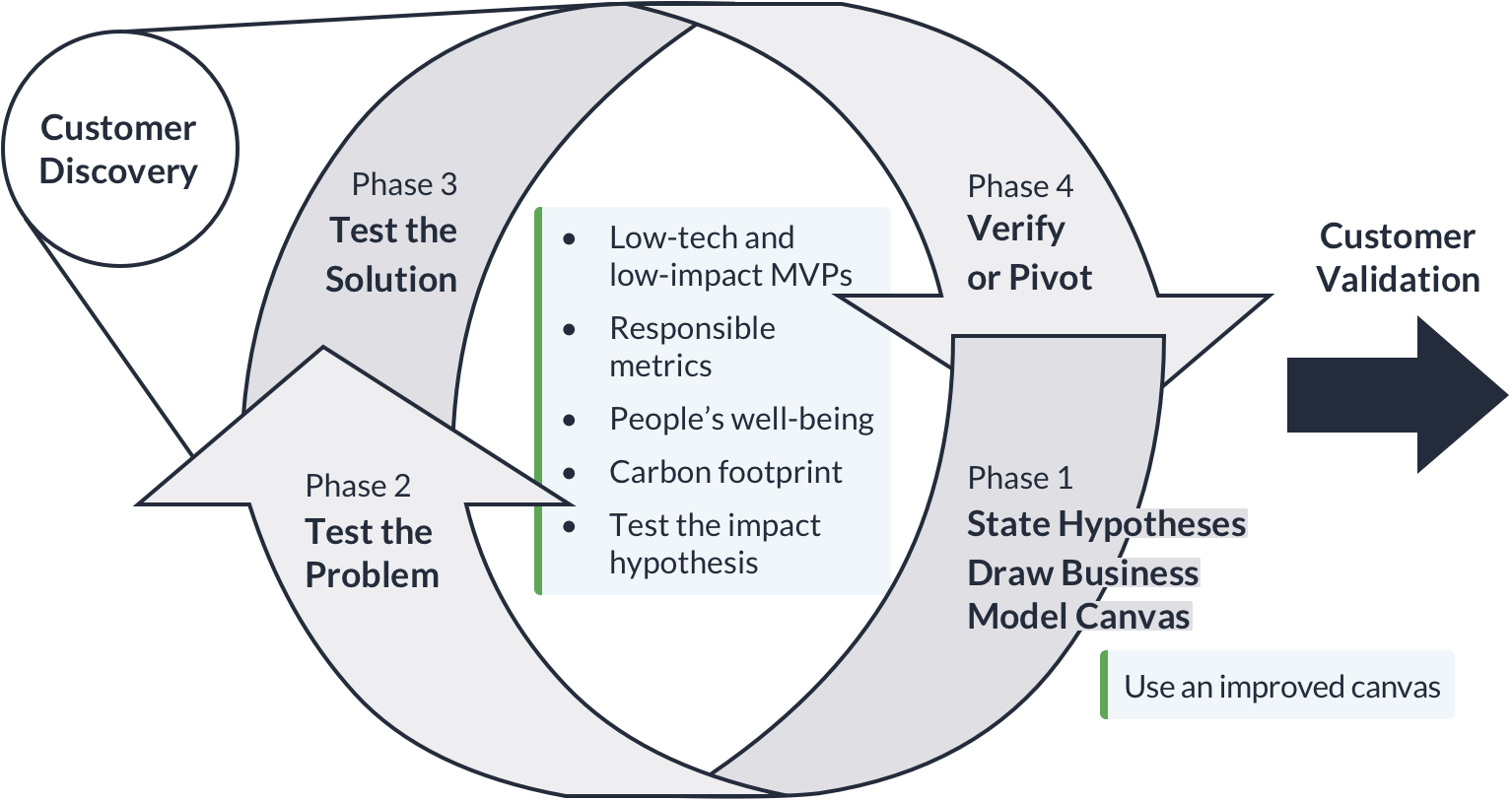Another well-known startup methodology is the Customer Development Model, described in The Startup Owner’s Manual by Steve Blank and Bob Dorf.
The model’s Customer Development Process includes four basic steps. The first two steps of the process (Customer discovery and Customer validation) focus on searching for a business model, while the next two steps (Customer creation and Company building) focus on executing the business model from the initial two steps.

The initial customer discovery step sets the tone for all further business activities of the startup, so we’ll primarily focus on this step of the process.
Customer Discovery
The customer discovery step shares many similarities with the Lean Startup methodology. As The Startup Owner’s Manual describes it, “customer discovery first captures the founders’ vision and turns it into a series of business model hypotheses.” In other words, a startup has to identify the assumptions behind its business model, which is usually presented on a business model canvas. The startup can also use the business model canvas as a scorecard of hypotheses throughout the process.
Additionally, the customer discovery step “(…) develops a plan to test customer reactions to those hypotheses and turn them into facts.” The customer discovery step is iterative, which means that a startup can repeat it as often as needed until the hypotheses are validated. If a hypothesis is proven wrong, the startup can pivot into a new direction during this step.

Given the similarities with the Lean Startup methodology, we can also apply the changes proposed in the previous section to the customer discovery process:
- using an improved business model canvas that exposes environmental & social costs and assumptions when defining the business model,
- building low-tech and low-impact minimum viable products (MVPs) to test the hypotheses,
- using responsible metrics, paying attention to people’s well-being and the product’s carbon footprint when evaluating solutions,
- testing the impact hypothesis as early as possible.
